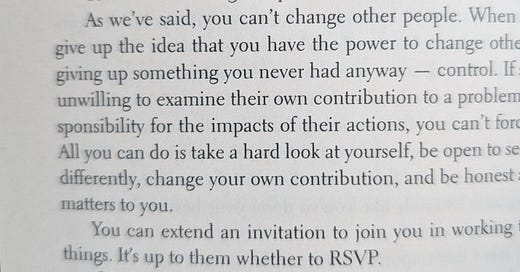I Hope This Helps 👍🏽 (Week of 4/20/2025)
The case for single-stair buildings, the scourge of the school pick-up line, the ignored increase in unsafe driving and how to become a better listener in this edition of I Hope This Helps👍🏽!
Welcome to I Hope This Helps, a weekly roundup of articles I’ve encountered that furthered my thinking about cities and life. From sustainable transportation to housing, to design, and the social forces shaping our daily lives, I take a broad lens in this review. Whether you're a planner, advocate, or just curious about the world around you, I hope you’ll find something here that resonates.
1️⃣ Single Stair Buildings
Many municipal building codes in the United States require multistory buildings to have at least two sets of stairs. This requirement is ostensibly based in fire safety, but this is an increasingly dated concern. From “The Case for Single-Stair Buildings”
Pew finds that if single-stair buildings are: built with fire-safe materials; equipped with sprinklers, smoke detectors, and other fire suppression systems; limited in height (up to 75’, in reach of a fire ladder truck), floor area, unit count, and exit distance; and include smoke-control systems and other protections, then they are “at least as safe” as other types of apartment buildings.
This requirement limits the number and type of multifamily structures that can be built in the United States. “The Case for Single-Stair Buildings” from the City of Yes Substack page, and “Why North America Can’t Build Nice Apartments” from the About Here Youtube channel dive into the case for single stair buildings in the United States.
2️⃣The School Car Pickup Line
In 1969 about 38% of kids took the school bus to school. In 2022, that figure was down to 28%. Increasingly, kids are being shuttled to and from school by their parents. This means the school pickup line has become an infamous American fixture. Beyond the time parents waste waiting in this line, anyone who has attempted to bike anywhere near a school between 7-8am or 2-3pm knows to beware the Suburban dropping off little Jimmy if you value your life. The College Towns Substack takes a deeper look into this phenomenon and suggest ways we might start to remedy it.
3️⃣Bad Driving Has Become Normalized
If you’ve felt like the roads have been a more lawless place lately, you’re not crazy. Reckless, distracted and downright dangerous driving was already tacitly accepted in the United States before 2020, but in the post-pandemic years, this behavior has exploded. Speed and red light cameras present solution to this problem, but in many places interventions like this are explicitly barred. Where they’re not, vandalism of the infrastructure supporting these interventions is rarely punished. This Youtube video from Flurfdesign dives into this largely ignored risk to public safety.
4️⃣On Listening and Changing People
I just finished the book Difficult Conversations by Douglas Stone, Bruce Patton and Sheila Heen. It’s a great book! If you’re looking to gain a better understanding of yourself and how to communicate with the world at large, I openly recommend you check this book out. It has helped me engage with the world in a more constructive way, and I hope I can help you do the same.
One of the many lessons I learned from this book is, to really engage in meaningful conversation, you have to check your personal agenda at the door. You can have an idea of what you expect to come out of the conversation, but must be open to the possibility that the conversation that needed to happen might not be the conversation that you initially intended. As you’re engaging in conversation, constantly ask yourself if you’re listening to understand the other person’s perspective, or if you’re just waiting for them to stop talking so you can respond. Check out this except from the book about this.
Thanks for reading! I’m doing research for an article about the urban planning space generally and could use your help. If you work in urban planning or an urban planning adjacent field, or you live in a city and care about how it functions, please take a minute and fill out this 5 minute survey and pass it around your networks. Thanks in advance!
» Survey Link «
If you enjoyed this post, check out the rest of my articles here!







Regarding the school pick-up line, the difference in modal shares in buses understates the degree of the problem. In the 1960s, there were many primary schools located in subdivisions, with many students residing within walking distance. I am guessing that parents of these generations chose residential location partly on this basis. Today, how many people choose a residence so that their kids can walk to school?